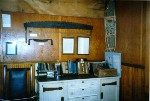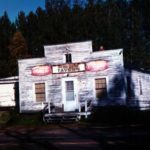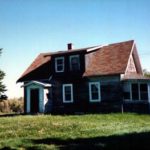If you would like to become a member or attend a meeting, please contact:
Wilson Spence III at 218-729-7746 or via email at wwsIII@msn.com
- REGULAR MEETINGS: Fourth Thursday of the month, 3 p.m. to 4 p.m.
- WORK DAY MEETINGS: Second Saturday of the month, 9 a.m. to 12:00 noon
- NOTE: All meetings are in the Canosia Town Hall. We do not meet during the months of November and December due to the holidays.
- Always telephone Wilson Spence II before coming to a meeting in case of cancellation.
Canosia Township Historical Society brochure – CLICK ON THIS LINK
A Short History of the Town of Canosia, written by Millicent O’Connell
Presentation given to the St. Louis County Board in the Canosia Town Hall, April 9, 2013.
In 1888, the Town of Canosia was established with three supervisors, a clerk, treasurer, two constables, a justice of the peace, road foreman, and an assessor. Most of these positions have been eliminated through the years. Our record books have beautiful handwritten minutes; the Treasurers’ books are so wonderful to read and provide a record of life in those early years, available at the town hall. Justice of the peace, birth and death records reveal how well these town’s people managed to support the citizens of the town.
Through Historical Society’s research, we discovered that land was donated to the town for our Town Hall, cemetery, and schools. The Town Hall was placed in the middle of the township area. In 1988 our township originally contained the area of Canosia and Grand Lake Townships. Some furniture was built for the building, a table and benches for meetings. Several continue to be in use today.
There are parts of four lakes in Canosia: Caribou Lake, Fish Lake, Wild Rice Lake, and Pike Lake (originally called Canosia Lake, which is an Indian name). Canosia Lake remains on early maps, some abstracts and deeds. The Historical Society has never found out by whom or when the name changed to Pike Lake.
Much of our land is swampy, from which our forefathers used tamarack logs to build roads to open up land for early settlers.
They cut birch, maple, white pine, cedar, white and black spruce, and basswood. We also have quite a few small gage railroad beds used for hauling logs in the 1800’s.
Pieces of rails, lumbering equipment and all types of home/farming tools have been donated and are displayed in the Canosia Town Hall. The Historical Society is permitted to show and display around the edge and walls. The Canosia Town Board continues to use some of these donated items for township business since 1888.
The township roads were usually named for the family that lived on the end of the road. These names changed often as new families occupied the homes. The Canosia Town Board requested research on these roads in the 1980s, leading to the discovery that we were approaching our 100th anniversary. The Historical Society was formed at this time. A book concerning Canosia Township and Pike Lake, with an illustrated history was written by a township resident and her daughter.
Members of the University of Minnesota Duluth geology department have researched several of the rocks and stone tools found by Canosia residents and donated to the Historical Society, for display in our town hall.
The old Swan Lake Road and Hermantown Road were the original roads running to and through our township. The Midway Road and Miller Trunk Highway are their names now.
The American Automobile Association (AAA) purchased property and formed the present golf club, picnic, and swimming grounds in 1908. It is the only County Club remaining in the AAA system today. [UPDATE: it has since been sold and is now the Pike Lake Golf and Beach Club].
The Merritt family built a cabin on the south side of Pike Lake. Cub LaJoy provided summer fun for swimmers, boating, dancing, and roller-skating. On Caribou Lake, barn dancing was held at Kehtel’s at the end and west of the Midway Road.
At Midway and Swan Lake (Miller Trunk Highway), known today as Four Corners: Sather’s Hardware, Bromme’s Bridgeman Store, a Standard Oil Gas Station, Carter’s Groceries, and Anderson’s Hotel were the commercial area. The St. Louis County Tool House on the northwest corner is still there today, although greatly expanded. A family ran a large dairy farm on the Martin Road and LaVaque Road, before the Martin Road was extended east to the Rice Lake Road.
Ledge rock, sand, and gravel pits dot many areas. Sand from here was used to extend the Duluth Air Base runway so that the largest airplanes can land there now.
There were no roads connecting the northeast corner of the township with the rest of the town. Speculators plotted a town-site and tried to secede from Canosia and attach with Fredenberg.
Ditches were dug in swampy areas of many townships in the 1920’s to drain land for vegetable gardens. This was required by the State of Minnesota and the Township’s townspeople had to pay for benefits gained by this endeavor – which proved futile, as the soil did not contain enough nutrients needed by the plants. Many townships went bankrupt due to the requirement. My deed had a lien on it that had to be paid before my mother could transfer my home to me. The ditch that was dug north of my 40 acres did not even touch this property, which was high land. Men from the work farm, currently the Duluth Airport, were hauled across our land. There was a large camp built west of the LaVaque Road to house men, horses, and large shovels that dug six-foot ditches north and south and east and west across these bogs. St. Louis County still has many of these ditches visible today.
Hand dug wells and septic systems are still in use here today, except around Pike Lake, which is now connected to WLSSD.
Our school buildings were small one and two-room buildings, some with teacherages.
Most homes supported themselves by selling wood, eggs, and cheese in Duluth via an all-day trip by horse and wagon; and raising crops and animals for home use.
The 1918 fire was a devastating event from Moose Lake to Duluth. The Historical Society has stories about this tragedy in our archives and in books written about this area.
Canosia Township celebrated its 125th anniversary this year, 2013.
Pandemic Stories Project 2020-2021
The Canosia Township Historical Society is collecting first-hand accounts how the pandemic affected Canosia Township residents to document this noteworthy time in our history.
Tell us what this pandemic, the virus, shortages, restrictions, quarantining, schooling at home, etc., meant to you and your family.
Write a little or write a lot, we want to hear from you!
The Historical Society will collect these stories and archive them for future generations.
You can mail your story to the Town Hall at 4896 Midway Road, Duluth, Minnesota, 55811, drop it in the slot on the side of the building, or e-mail it to CanosiaHistory@gmail.com.
Questions? Please call Marci at 218-464-2419.
Tour grounds and historic barn built right after the 1918 Fire on the former Kolojeski farmstead, now known as Canosia Grove
Barn and Blooms Open House
Saturday, May 25, 2019
1 to 4 p.m.
5508 Martin Road
Duluth, Minnesota 55811
https://www.facebook.com/
canosiagrove.com
CANOSIA TOWNSHIP 1918 FIRE REMEMBRANCE EVENTS
Saturday, October 13, 2018
Brought to you by the Canosia Township Historical Society
Open House: 10 am- 1 pm at the Town Hall
4896 Midway Road (Midway and Martin Rd) – Bring your memories and artifacts.
Barn Tour: 1 – 2 pm at the Kolojeski farmstead
5508 Martin Road (Martin and Lindahl Rd) – Enter via Lindahl Road and park on the grass.
Tour the 100 year old barn, listen to the Kolojeski family story and survival of the fire.
Other events related to the 1918 Fire Remembrance:
Thursday October 11 – Tony Tracy 1918 Fire Program at Hermantown High School, sponsored by Proctor, Esko, Hermantown, Canosia Historical Societies, 7 pm
See list of 1918 Fire Community Events at https://www.thehistorypeople.org/single-post/2018/05/04/1918-FIRE-COMMUNITY-EVENTS
Audrey Eaton (fall of 2012) speaks of great fire of 1918 that hit Pike Lake, near Duluth MN.
We are very interested in any stories and/or photos you might have about the 1918 fire. Please contact Wilson Spence III at 218-729-7746 or via email at wwsIII@msn.com. Remembrance events will take place in October 2018, marking the 100th anniversary of the fire.
The Twin Ports Genealogical Society compiled information on the cemetery
located here in Canosia Township. The results can be found here.
Historical Photos
 |
 |
 |
 |
|
| Historical Society artifacts on display in the Canosia Town Hall | Pike Lake Tavern Later Years |
Rural Farm Homestead (Gielarowski’s) |
||
